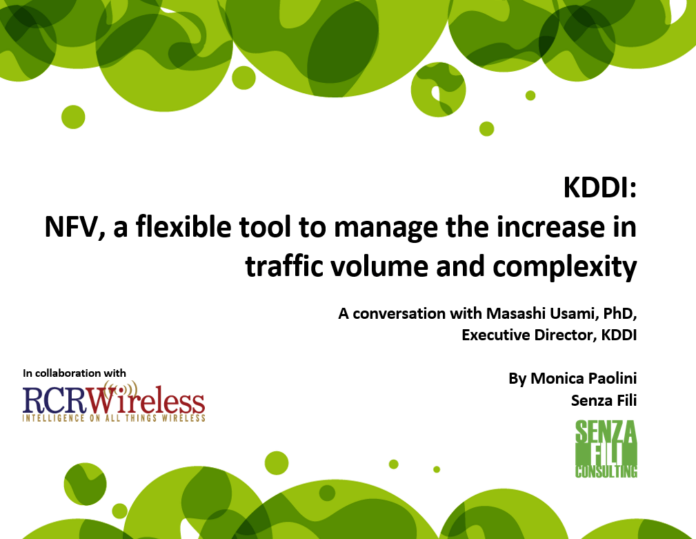A conversation with Masashi Usami, PhD, Executive Director, KDDI
Faced with an increase in traffic volume and complexity, KDDI looks at NFV as a way to get the flexibility and agility it needs to increase network efficiency and support new services.
“In 2020 with the Olympic Games in Tokyo, we will have extremely high traffic areas and more traffic variability. The current core network will not be able to support that traffic level. NFV functionality will have a big role in that world,” says Masashi Usami.
Initially, NFV will be especially valuable in managing signaling traffic – and especially that from the growing M2M market. “Smartphone traffic consumes many signaling as well as data resources, on the other hand, new M2M service is consuming more and more signaling resources, rather than data. When our signaling resources are overloaded, the virtualization of the core network can help us process the signaling traffic. We can process signaling with our existing EPC, but we think we can do that more effectively with virtualization.”
The journey to full network virtualization is going be a long one, but the transition is moving at a fast pace and operators are learning a lot in the process. Read the transcript of our conversation with Masashi Usami to find out KDDI’s approach to NFV and what it has learned so far.
This conversation will be included in the Senza Fili report “The emergence of the NFV ecosystem: Laying the foundation for a new way to run mobile networks” that will be published on October 6, 2014. If you would like to receive a complimentary copy of the report, please click here and you will be the first to receive the report when it is finalized.

